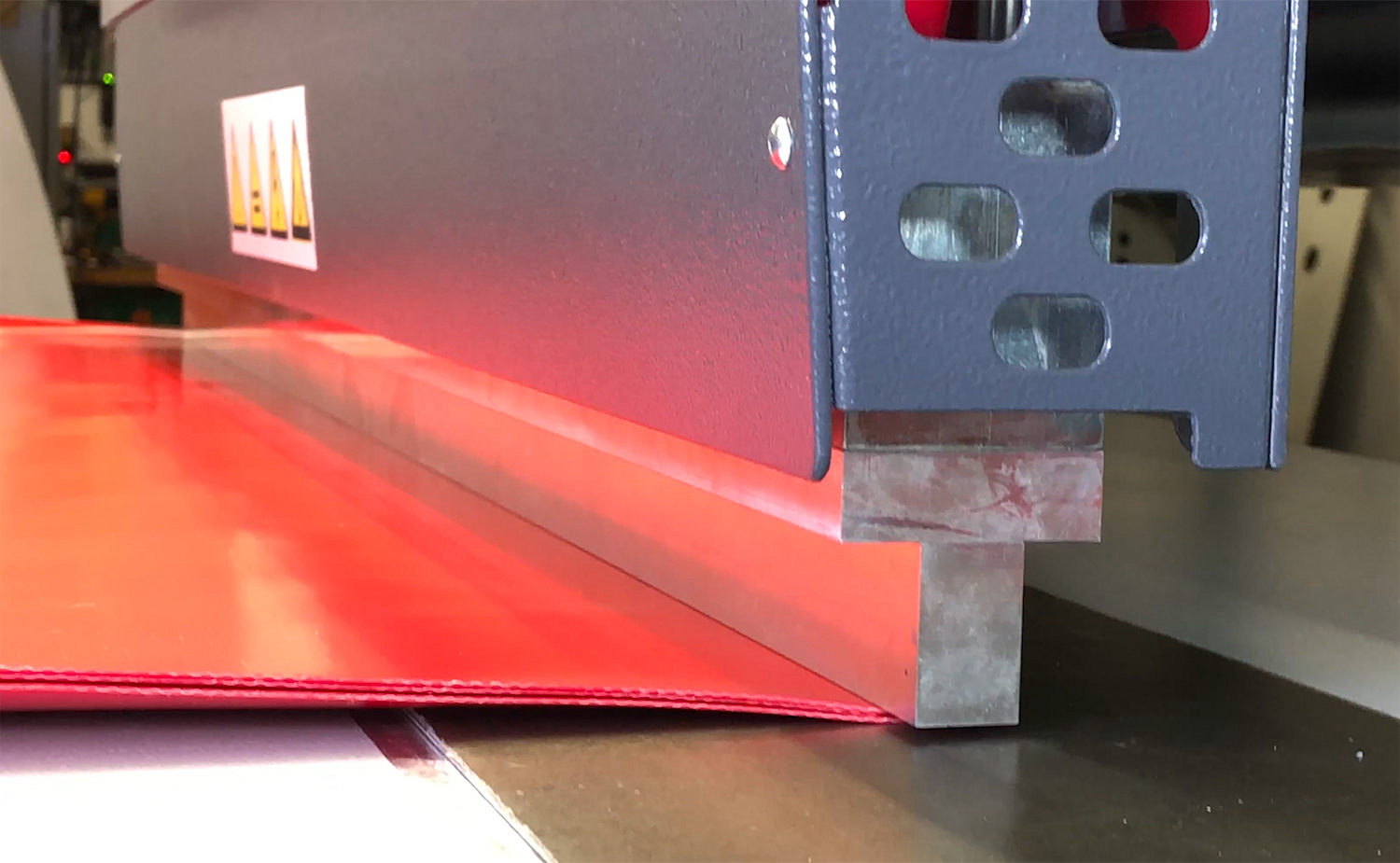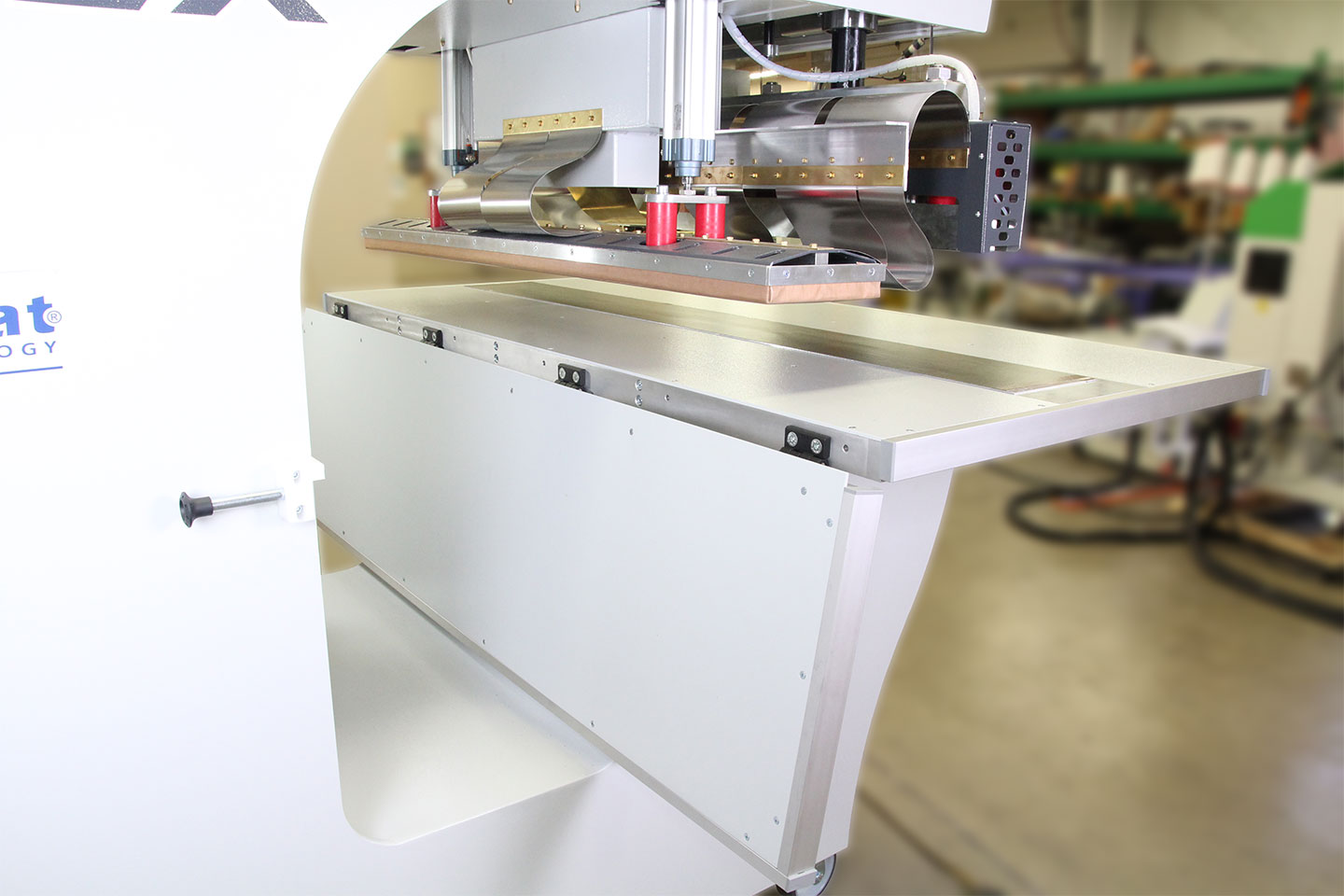Radio Frequency Welding and How Does It Work?
Radio frequency welding—also called RF welding, high-frequency welding, or dielectric heat sealing—is a manufacturing process that uses high-frequency electromagnetic energy, such as radio waves and high frequency radio waves, to fuse thermoplastic materials. The radio frequency welding process is used to join plastic surfaces by generating heat internally using these waves, rather than relying on an external heat source.
Unlike traditional heat-based welding, which relies on external heat sources, RF welding excites the polar molecules within the material. This causes them to vibrate and generate heat internally, resulting in a uniform bond that’s both strong and precise. This is a form of dielectric heating, where radio frequency energy and high frequency radio waves generate heat through molecular friction and dielectric loss within the material.
This dielectric welding process is widely used when airtight or watertight seams are required, such as in medical devices, inflatables, and industrial fabrics.
The RF welding process typically follows these steps:
-
Material positioning – Layers are placed between two electrodes.
-
Electromagnetic field applied – High-frequency energy (often 27.12 MHz) is introduced, creating an electric field (or electrical field) between the electrodes that causes polar molecules in the plastic surfaces to vibrate.
-
Molecular vibration – Polar molecules heat from the inside out due to molecular friction and dielectric heating.
-
Bond formation – Pressure is applied to fuse materials.
-
Cooling – The seam solidifies before being released. As the material cools, the molecular bonds solidify, ensuring a strong weld.
Learn more about RF welding technology here.
Key Benefits of RF Welding for Manufacturers
For companies that depend on strong, consistent, and repeatable seams, RF welding offers unmatched advantages:
- Superior seal quality—RF welding delivers reliable, consistent, and hermetic seals, ensuring product integrity in critical applications.
-
Seam strength—RF welding produces durable bonds and durable seams that are often stronger than the original material, providing exceptional resistance to leaks and tears.
-
Airtight and watertight seals—achieve a watertight or airtight seal for demanding applications, preventing air and moisture ingress or egress.
- Energy efficiency and improved energy efficiency—modern RF welding machines are designed for reduced energy consumption, leading to operational cost savings and supporting sustainable manufacturing.
-
Consistent results in large-scale production.
-
Preserved surface quality—no burning or scorching.
-
High throughput when paired with automation.
-
Compliance with industry regulations (FDA, ASTM, ISO).
-
Adaptability to multiple industries and product types.
Compared to other methods, RF welding excels at industrial fabric sealing where repeatability, superior seal quality, energy efficiency, and airtightness are non-negotiable.
RF Welding – Compatible Materials and Limitations
RF welding only works on plastic materials with polar molecules and specific molecular structures. These plastics respond to electromagnetic energy, allowing internal heating and bonding. The process is especially effective for rigid plastics and other different materials that have compatible material properties.
| Material | RF Weldable? |
|---|---|
| PVC | Yes |
| Polyurethane (PU) | Yes |
| EVA | Yes |
| PET-G | Yes |
| Polyethylene (PE) | No |
| Polypropylene (PP) | No |
| Nylon | No |
Polyvinyl chloride (PVC) is the most common plastic material used in RF welding due to its favorable material properties and molecular structure.
Why not all plastics? The molecular structure and material properties of rigid plastics and different materials determine their compatibility with RF welding. Non-polar materials don’t react to the high-frequency energy used in RF welding, making bonding impossible without adhesives or additional processes.
RF Welding vs. Hot Air Welding: What’s the Difference?
| Factor | RF Welding | Hot Air Welding |
|---|---|---|
| Heat Source | Electromagnetic field (internal heating) | External hot air |
| Precision | High, repeatable | High, but more operator-dependent |
| Materials | Polar plastics only | Works with wider range, including PE/PP |
| Production Speed | High, automation-ready | Moderate to high |
| Seam Strength | Often stronger than base material | Strong, may require reinforcement |
If your priority is airtight seam welding with consistent quality, RF is the way to go. For broader material compatibility and field repairs, hot air may be the better choice.
When comparing weld size and weld sizes, RF welding can produce both small, precise welds and large, continuous seams depending on the tooling and sealing dies used. RF welding uses specialized welding machines, such as high frequency welding machines and radio frequency welding machines, which include other components like electrodes, sealing dies, and transformers. An rf welder generates an rf weld by applying high frequency energy to the material, a process known as rf sealing, which does not require an external heat source.
Best Practices for Quality RF Welds
Getting the most out of your RF welding system comes down to process control and machine maintenance. Using automated machines can improve consistency and throughput, ensuring high-quality welds with minimal human intervention.
Pro tips for consistent results:
-
Use calibrated electrodes for even pressure and energy distribution.
-
Maintain proper dwell time and cooling.
-
Keep a consistent overlap width.
-
Follow documented SOPs for repeatability.
-
Run test welds before full production.
-
Keep tooling and machine components clean to avoid arcing.
-
Monitor heat generation during the welding process to ensure optimal internal heating of the thermoplastic material.
-
Make sure the surrounding material is properly supported to achieve stronger, more uniform welds, especially in thicker materials.
-
Consider using energy efficient RF welding systems to reduce operational costs and support environmentally friendly manufacturing.
Top Applications of RF Welding in Industrial Manufacturing
Radio frequency welding applications are found across various industries that require strong, leak-proof, or sterile seams:
-
Medical: blood bags, IV fluid containers, surgical mattresses—where sterile and contamination-free seals are critical.
-
Defense: inflatable shelters, protective covers.
-
Automotive: interior trim, door panels.
-
Inflatables & tents: airtight structures, tarpaulins.
-
Industrial packaging: large PVC bags, protective liners.
How to Choose the Right RF Welding Equipment
When evaluating RF welders, it is important to understand that both RF welding and high frequency welding refer to the same process—dielectric welding using electromagnetic energy. In the industry, these terms are used interchangeably to describe the internal heating of thermoplastic materials through high-frequency electromagnetic fields.
Selecting the right welding machines and understanding radio frequency welding technology is crucial for optimal results. Consider the following when choosing equipment:
-
Application & materials you’ll be welding, ensuring compatibility with radio frequency welding technology.
-
Machine size and power output.
-
Tooling flexibility for various product sizes.
-
Automation requirements for scaling production.
-
Operator training needs and ease of setup.
Miller Weldmaster offers RF welders for PVC and other compatible materials, backed by expert guidance from machine selection to integration. Talk to our team today.
Why Manufacturers Trust Miller Weldmaster
For over 50 years, Miller Weldmaster has been designing American-made RF welding systems tailored to the needs of manufacturers worldwide. We combine engineering expertise, custom machine design, and unmatched technical support to help our customers achieve reliable, efficient, and profitable production.
Frequently Asked Questions About RF Welding
What is RF welding used for?
It’s used in industries that need airtight, watertight, and strong seams—such as medical, inflatables, packaging, and defense.
How strong are RF welded seams?
Often stronger than the original material due to molecular-level bonding.
Can all plastics be RF welded?
No—only polar plastics like PVC, PU, EVA, and PET-G.
Is RF welding the same as dielectric sealing?
Yes, the terms are interchangeable.
How does RF welding compare to ultrasonic welding?
- RF welding: Best for large, airtight seams in polar plastics.
- Ultrasonic welding: Better for small, rigid parts.
Can RF welding be automated?
Yes—modern systems integrate seamlessly into automated lines.
Is RF welding safe for operators?
With shielding, grounding, and proper training, it’s a safe and reliable process.




.png)